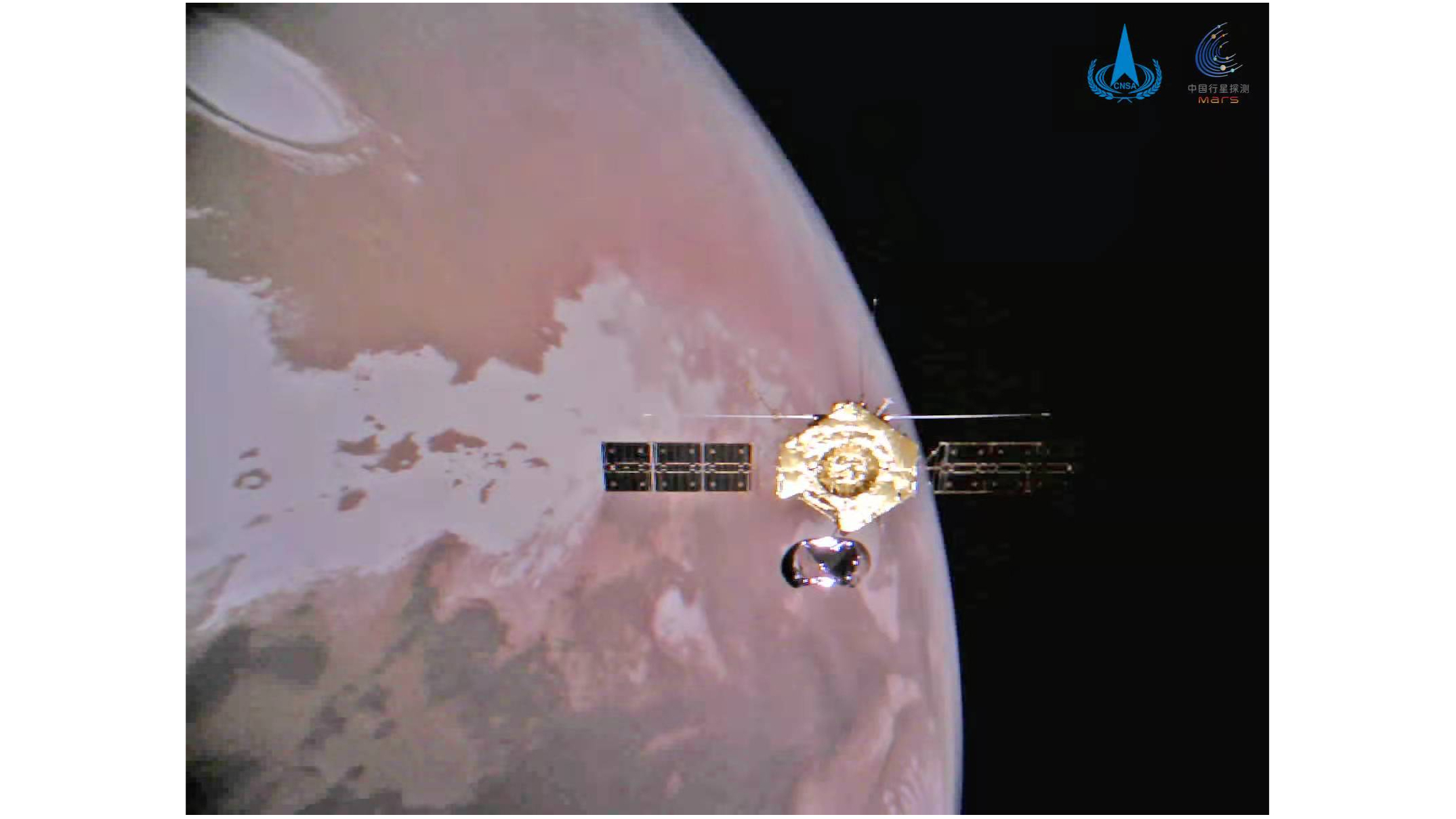
China's Tianwen-1 orbiter spotted a massive dust storm on Mars near Olympus Mons, the biggest mountain in the solar system.
The massive dust storm was captured by the medium-resolution MoRIC camera on Tianwen-1 in January 2022. The mission launched in July 2020 and arrived in orbit around Mars just ahead of the arrival of NASA's Perseverance rover in February 2021.
An image of the storm was processed by Andrea Luck, using data from China's Lunar and Planetary Data Release System. Luck then shared the images on X. A larger version is viewable on Flickr.
Related: Mars: Everything you need to know about the Red Planet
Mars - Massive dust storm looms near the mighty Olympus Mons Full size image 9711x3800 & more info: https://t.co/1cb2KPMRxYCNSA Tianwen-1MoRIC CameraJan 6th 2022North on the right#Mars #Space #Tianwen-1 #astronomyCreditCNSA/CLEP/PEC/MoRIC/AndreaLuck pic.twitter.com/gdAwA1CljFJanuary 5, 2024
A Chinese research team is developing methods to identify and assess sand and dust storms using MoRIC images, according to a journal article published in October last year.
Luck also processed a striking crescent Mars image of what is apparently the same storm near Olympus Mons, making the most of the fact there are several active orbiters around Mars. The image this time came from the UAE's Hope Mars mission probe.
We live in an era in which multiple probes works at the same time around Mars!Dust storm near Olympus MonsFull size & more info: https://t.co/sOjylo1uTaSame area and same time of the one in this thread.@HopeMarsMission2022-01-06 02:11 at 39,322 km#Mars #Space #Astronomy https://t.co/4YcZqi0Zyv pic.twitter.com/drgDg9f1bWJanuary 8, 2024
The Tianwen-1 mission also included the solar-powered Zhurong rover. Its successful landing made China only the second country to operate a rover on the Red Planet.
Zhurong completed its primary mission and went on to conduct extended exploration activities in the large plain of Utopia Planitia. It entered hibernation in May 2022 and was expected to reawaken in December that year.
However, China has been unable to make contact with the rover since its hibernation. It is thought that the vehicle's solar arrays became covered with more Martian dust than expected, rendering it unable to generate the power necessary to reactivate.







